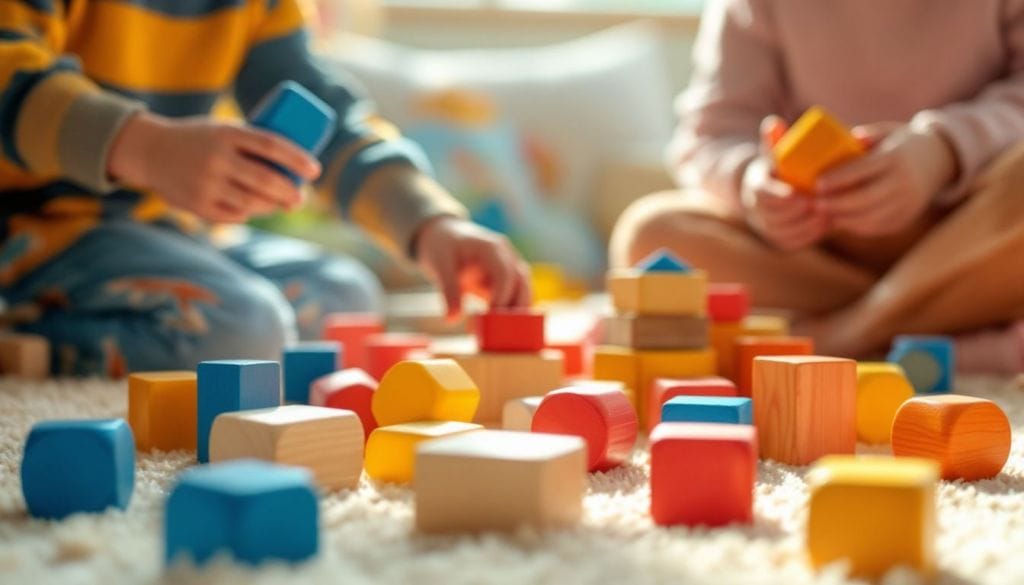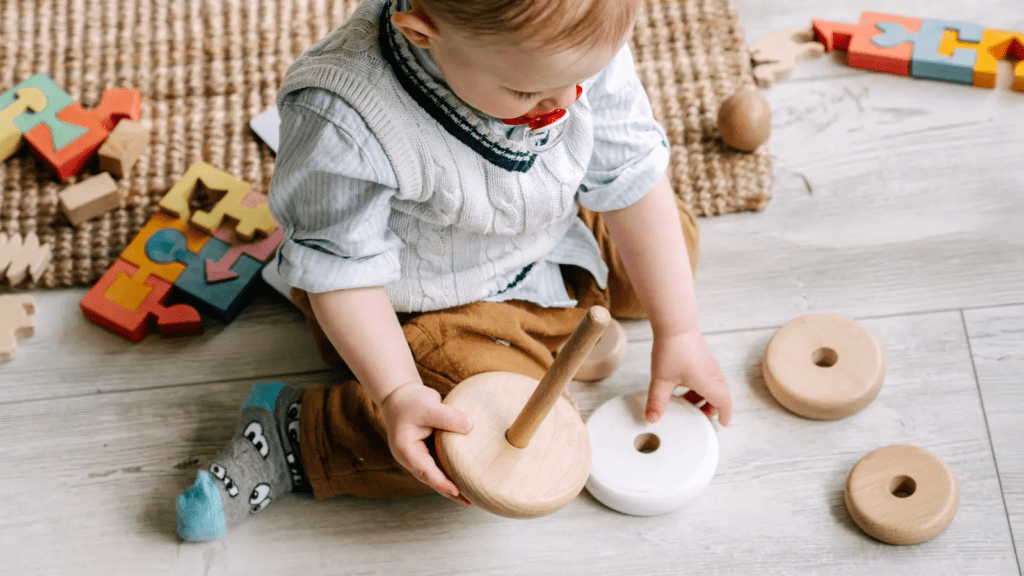What Age Are Wooden Blocks Good for? Benefits of Building Blocks
Wooden blocks have long been cherished as a staple in early childhood development. They captivate the imaginations of children and provide endless opportunities for creative play.
But at what age are these versatile toys most beneficial? This article will explore the developmental milestones associated with wooden blocks. We’ll highlight their advantages for toddlers and preschoolers.
From enhancing fine motor skills to fostering social interaction, we’ll delve into the optimal age ranges for introducing wooden blocks.
Key Takeaways
- Wooden blocks are ideal for children aged 1-7 years. They support various stages of developmental play.
- Infants (6 months+) can engage with larger, soft wooden blocks for sensory exploration.
- Toddlers (1-3 years) benefit from lightweight wooden blocks that enhance grip and coordination.
- Preschoolers (3-5 years) use wooden blocks to develop creativity, problem-solving, and spatial skills.
- Early elementary children (5-7 years) enjoy wooden blocks for advanced building techniques and STEM learning.
How Do Infants and Toddlers Benefit from Wooden Blocks?
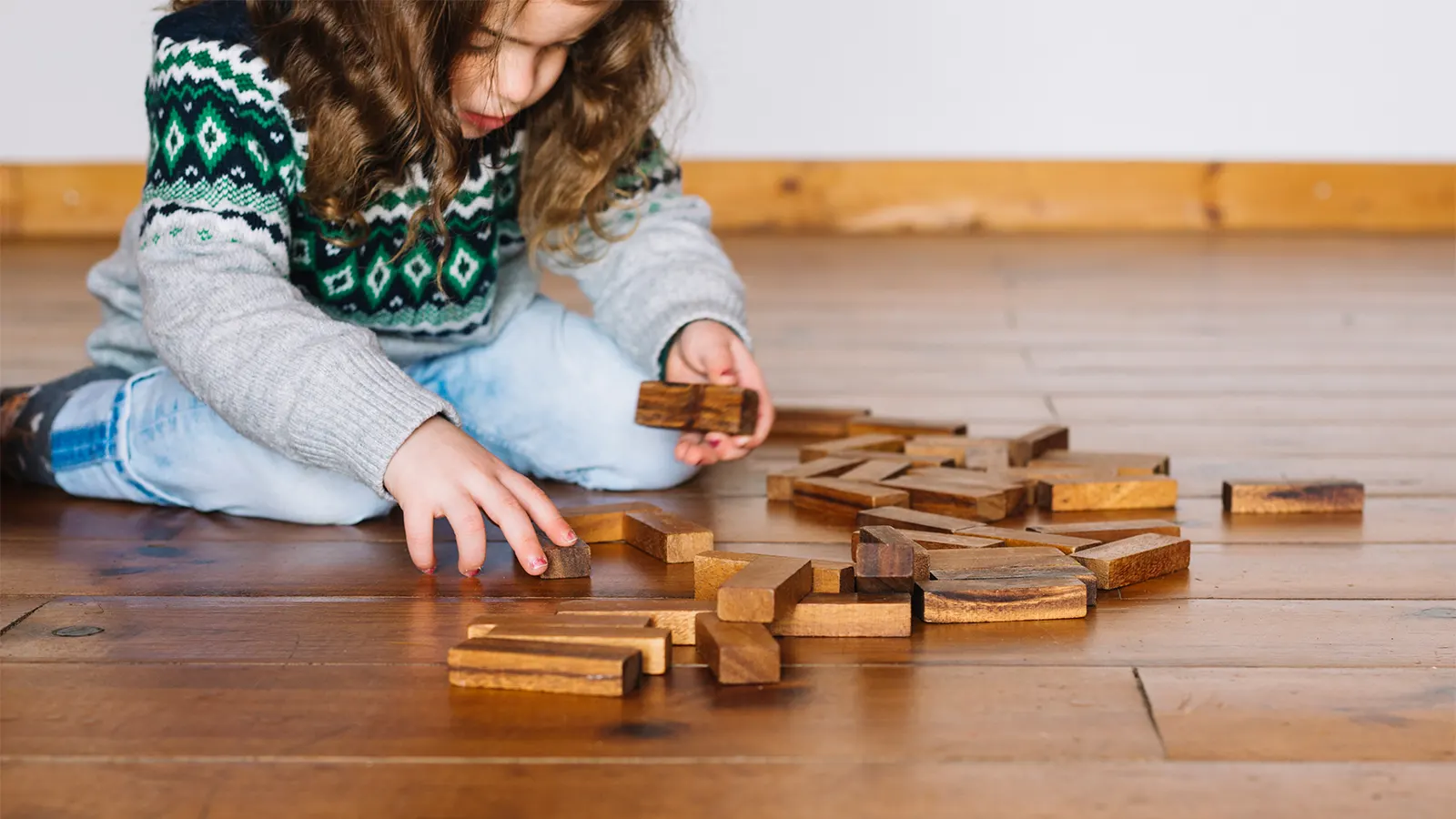
Now, let’s look at how wooden blocks help meet the developmental needs of infants and toddlers.
How Does Block Play Enhance Fine Motor Skills?
Playing with blocks for infants and toddlers will enhance their fine motor skills.
When toddlers stack blocks, they practice vital hand-eye coordination and dexterity. They learn to grip, align, and balance each piece carefully. This stacking process boosts their ability to manage pressure and speed. It also helps prevent their towers from collapsing.
Infants benefit, too. They develop hand-eye coordination through activities like tapping and banging blocks together. These actions enhance their ability to grasp and release objects. This skill is essential for future tasks, such as using utensils or handling small items.
How Does Block Play Aid in Spatial Awareness?
Wooden blocks also aid in developing spatial awareness in infants and toddlers. When your child engages in block play, they experiment with placement and balance. They learn how objects relate in space.
As they stack blocks, they visualize three-dimensional structures. They understand height, width, and depth. These activities boost their visual-spatial skills. These are essential for maneuvering their environment.
Through arranging and lining up blocks, your child recognizes patterns and sequences. This lays the groundwork for future mathematical understanding.
Block play encourages toddlers to practice alignment and balance. This hands-on exploration also supports child development. It allows kids to investigate cause-and-effect relationships. This will enhance cognitive growth and prepare them for more complex problem-solving tasks.
What Problem-Solving Skills Do Children Gain from Building Blocks?
How do children develop problem-solving skills by playing with building blocks? By engaging with building blocks, toddlers learn to assess stability and make adjustments.
As they stack and balance blocks, they grasp cause and effect. So they understand why structures stand firm or collapse.
Additionally, block play boosts spatial awareness. This helps them visualize how shapes fit together and relate to their surroundings.
With collaborative block play, toddlers also gain communication and negotiation skills. Working together to build structures fosters sharing ideas and resolving conflicts.
What Age Are Wooden Blocks Good for?
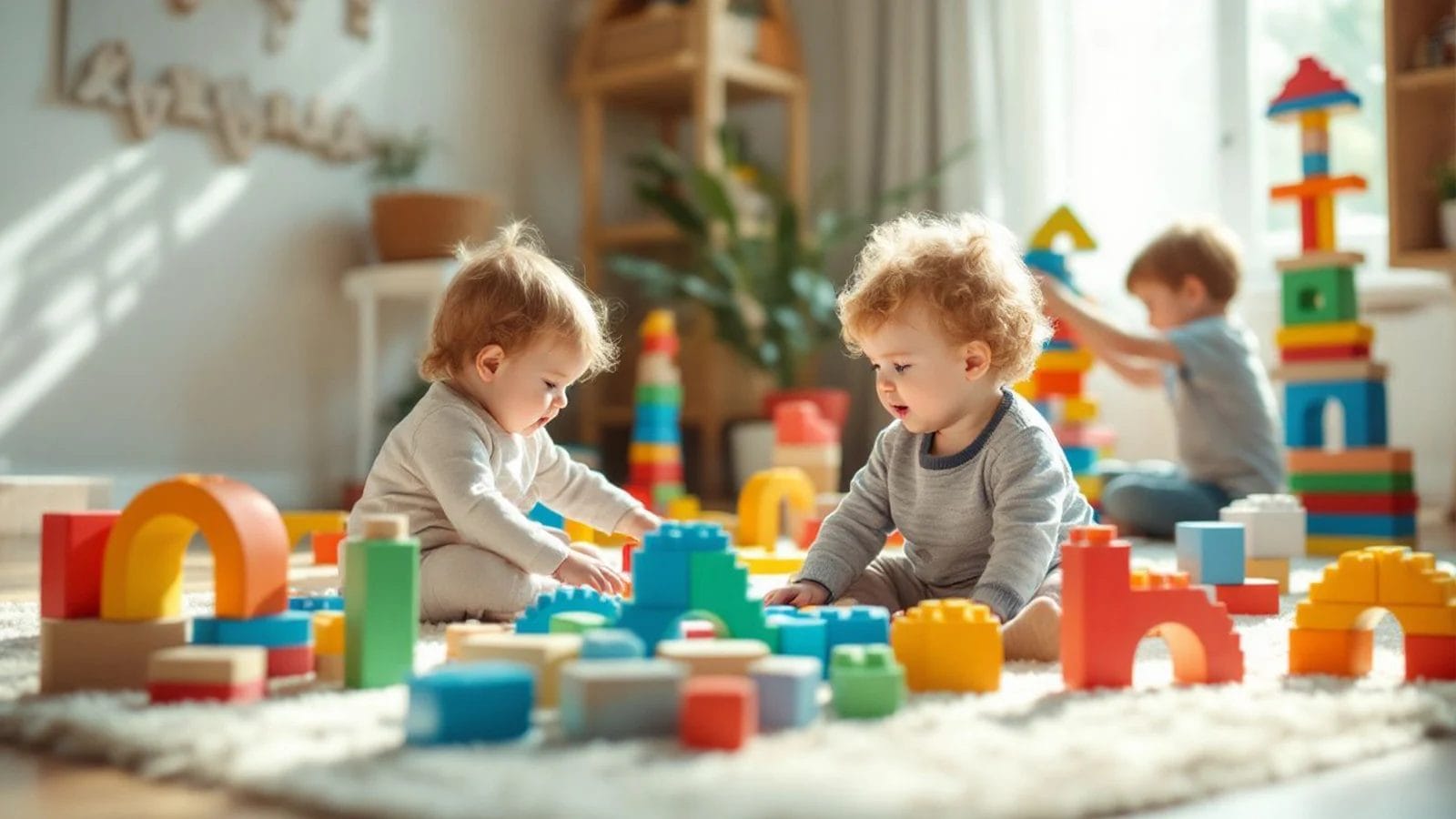
To help you make a wise decision, let’s explore the best wooden blocks available for kids of all ages.
What Are the Advantages of Soft Blocks for Infants?
Soft blocks are designed for infants and toddlers. These toys provide a perfect balance of safety and fun. Their lightweight materials and varied textures enhance sensory engagement with your child’s senses.
Vibrant colors stimulate cognitive development. Plus, the easy-to-grasp design promotes fine motor skills and hand-eye coordination. They explore their creativity as your little one stacks and manipulates these blocks.
Additionally, many soft block designs are safe for mouth exploration. This caters to infants’ natural curiosity while ensuring they’re free from harmful chemicals.
Ideal Blocks for Preschoolers and Early Elementary Kids
Wooden blocks are perfect for preschoolers and early elementary kids. These blocks enhance building skills and encourage open-ended play.
For preschoolers, larger block sets are ideal as they promote stacking and balancing. These blocks allow kids to construct imaginative structures like bridges and towers. So they can foster creativity and critical thinking. Open-ended play encourages them to engage in symbolic play. It helps build language and storytelling skills.
Furthermore, wooden blocks encourage teamwork and negotiation among children. They’re great for education, helping to teach math and science concepts. They also support interdisciplinary learning in early childhood development.
How Do Different Sizes of Blocks Impact Play?
Why do different sizes of wooden blocks matter in play? They cater to various developmental stages, enhancing your child’s growth.
- Infants benefit from larger blocks, which help develop grip and hand-eye coordination.
- As toddlers grow, smaller blocks become essential. These objects can hone fine motor skills through stacking and balancing exercises.
- Medium-sized blocks offer preschoolers opportunities for imaginative play and creativity. These toys allow them to build complex structures easily.
How to Encourage Block Play in Children
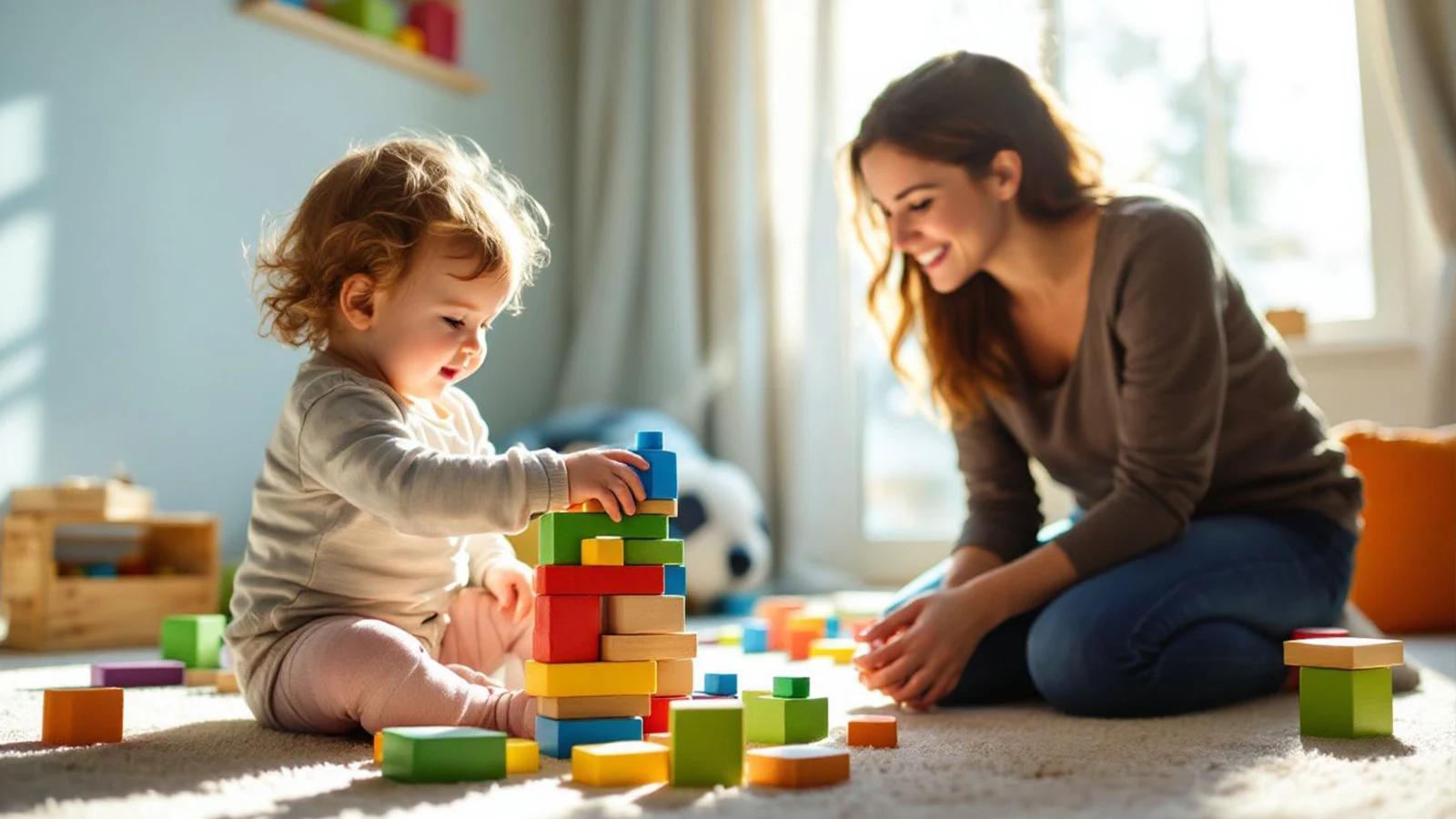
Next, we’ll look at some effective strategies to encourage block play at home.
What Activities Can Kids Do Using Blocks?
Encourage your child’s creative and imaginative side by prompting storytelling during play. This will enhance language skills and enrich children’s development.
Organize block-building challenges, such as constructing the tallest tower. These will nurture critical thinking and problem-solving abilities.
Discuss the textures, shapes, and weights of different blocks. This will introduce sensory exploration that further stimulates their growth.
How to Create an Engaging Block Play Environment
Creating an engaging play environment is important for nurturing your child’s development.
- Set up a designated area for block play to give your toddler a safe space to explore.
- Use block sets with varied textures, shapes, and sizes. These can stimulate their senses and encourage tactile learning.
- Invite siblings or friends to join in for collaborative building. This will promote social skills and teamwork.
- Use open-ended prompts like “Create a tower for your toys” to inspire creativity and problem-solving.
- Rotate block sets periodically to keep the play experience fresh.
Creative Ways to Use Alphabet Blocks
To engage your child in block play, alphabet blocks offer a creative twist. They combine fun with learning.
- Encourage early literacy and language skills by constructing simple words or phrases.
- You can promote imaginative play by building towers or structures that represent specific letters or words.
- Integrate storytelling by creating scenes or characters. This will enhance their oral self-expression and narrative skills.
- For cooperative play, invite children to collaborate on building projects. This will reinforce teamwork and social skills.
- Introduce games like spelling challenges or matching letters to objects for a fun, interactive experience. This will stimulate cognitive development through play.
What Makes Building Blocks an Essential Toy for All Children?
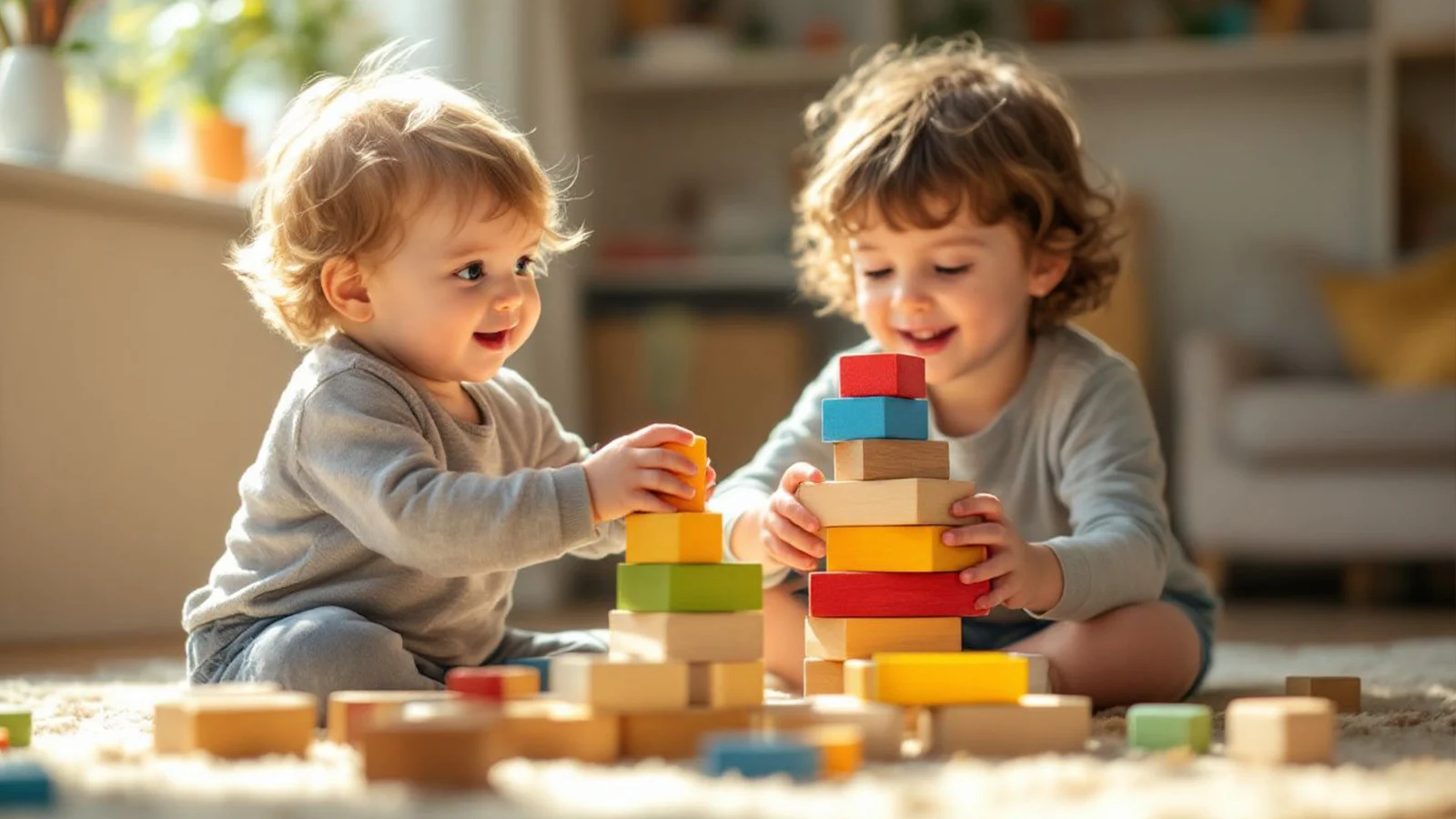
Building blocks can transform play into a powerful learning experience. Their benefits are immense as they help children develop through learning through play. They teach fundamental concepts, such as cause and effect, balance, and spatial awareness.
With age-appropriate block sets, children enhance fine motor skills and hand-eye coordination. Skills like collaboration thrive as kids negotiate and share during group play, fostering social growth.
As your child’s creativity and imagination soar, blocks support storytelling and diverse constructions. Their open-ended nature makes them adaptable as children grow. This will ensure ongoing educational value.
With their timeless appeal, building blocks are a staple that enriches any child’s toy collection.
Conclusion
Wooden blocks are an essential addition to your child’s playtime. They offer endless opportunities for learning and development. From boosting sensory engagement in infants to enhancing creativity and problem-solving skills in preschoolers, blocks grow with your child.
Encourage them to experiment and explore with different block sets. Making blocks a staple in your child’s toy collection supports their growth and nurtures a lifelong love for learning.
FAQs
What Age Can Kids Play With Wooden Blocks?
You can introduce wooden blocks to kids as early as 6 months. They’ll enjoy grasping and exploring. By 16 months, they start stacking. By age 3, their play becomes imaginative, enhancing creativity and cognitive skills.
Are Wooden Blocks Safe for a 1 Year Old?
Yes, wooden blocks are safe for a 1-year-old. But you should guarantee they’re non-toxic, lightweight, and have rounded edges. Supervise play to prevent choking hazards. Enjoy the developmental benefits as your child explores and learns.
What Age Group Are Building Blocks For?
Building blocks suit a wide range of ages. You can introduce them as early as 6 months for sensory play. As skills develop, they enhance creativity, cognitive abilities, and collaboration. They remain beneficial through childhood and beyond.



